Best slug-repellent plants: 14 slug-proof planting choices for flower beds
Growing slug-repellent plants in your plot will help stop these pests munching their way through your flower beds and borders


Adding slug-repellent plants to your beds and borders can be a smart choice in any planting scheme. After all, waking up to discover that beloved plants have been devoured by slugs during the night is a horror that most gardeners dread.
In high-rainfall areas slugs can be very destructive, chewing their way through the leaves of plants they find irresistible (such as delphiniums and dahlias) under cover of darkness.
But thankfully, there are lots of plants they are uninterested in. Avoid the heartache of slugs decimating borders by growing things they find repellent. For instance, they will slide past foliage that is strongly aromatic (such as lavender), too hairy (for example, lamb’s ears), or too chewy (including stonecrops).
They always give thorny roses a wide berth and will steer clear of anything poisonous, such as foxgloves. Discover which plants are slug-proof, and you won’t have to spend spring and summer learning how to get rid of slugs from your precious plants.
Keep pests away with these 14 slug-repellent plants
Make sure your treasured flower bed ideas stay looking good by including plenty of slug-repellent plants in your planting list. Take your pick from some of our favorites to ensure you won’t have to spend hours waging war on these slimy pests.
1. Calamagrostis x acutiflora ‘Karl Foerster’ AGM

- Hardiness: USDA 5-9 (UK H6)
- Height: 5ft (1.5m)
- Spread: 3ft (90cm)
- Best for: Fall interest
This feather-reed grass forms architectural columns of vertical flower panicles that mature to straw blonde.
‘Grasses are great in slug-prone areas as so many of them do not seem to be eaten by slugs and snails,’ says Neil Lucas, owner of the Knoll Gardens nursery, which specializes in different types of ornamental grass. Calamagrostis is a deciduous grass that can be used for screening or paired with veronicastrum in well-drained, open, sunny borders.
2. Dianthus carthusianorum
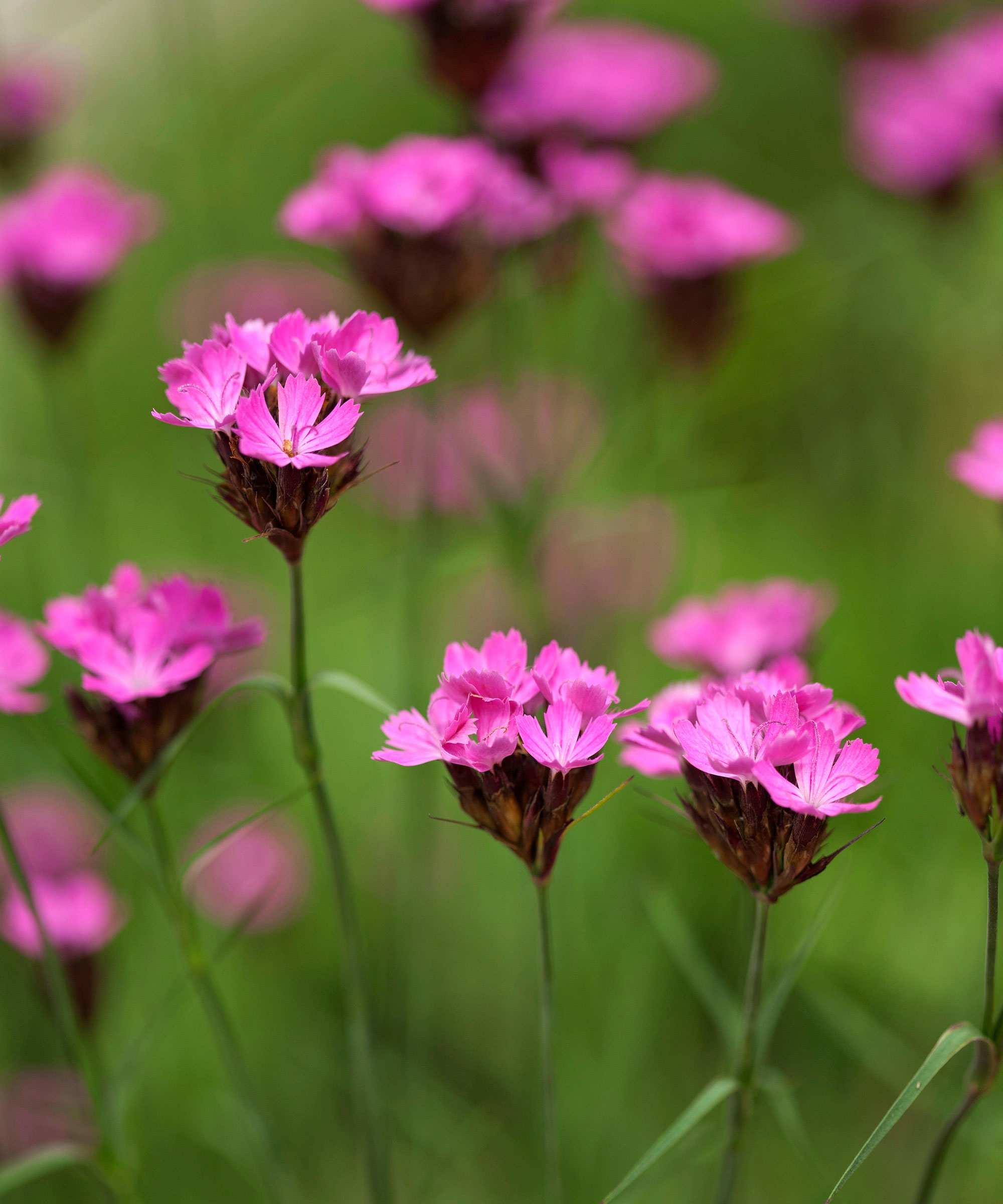
- Hardiness: USDA 5-9 (UK H7)
- Height: 2ft (60cm)
- Spread: 8in (20cm)
- Best for: Gravel gardens
Loved by garden designers, the German pink has rose-magenta blooms atop slender grass-like stems throughout the summer.
Unlike traditional varieties of garden pinks, it is tall and wiry with single flowers, giving it a more contemporary look, but has no fragrance.
Hailing from alpine meadows, it is happiest in very well-drained soil in full sun, preferring neutral to alkaline soil types, and pairs well with other drought-tolerant stalwarts, such as lamb’s ear and sea holly.
3. Geranium Rozanne AGM
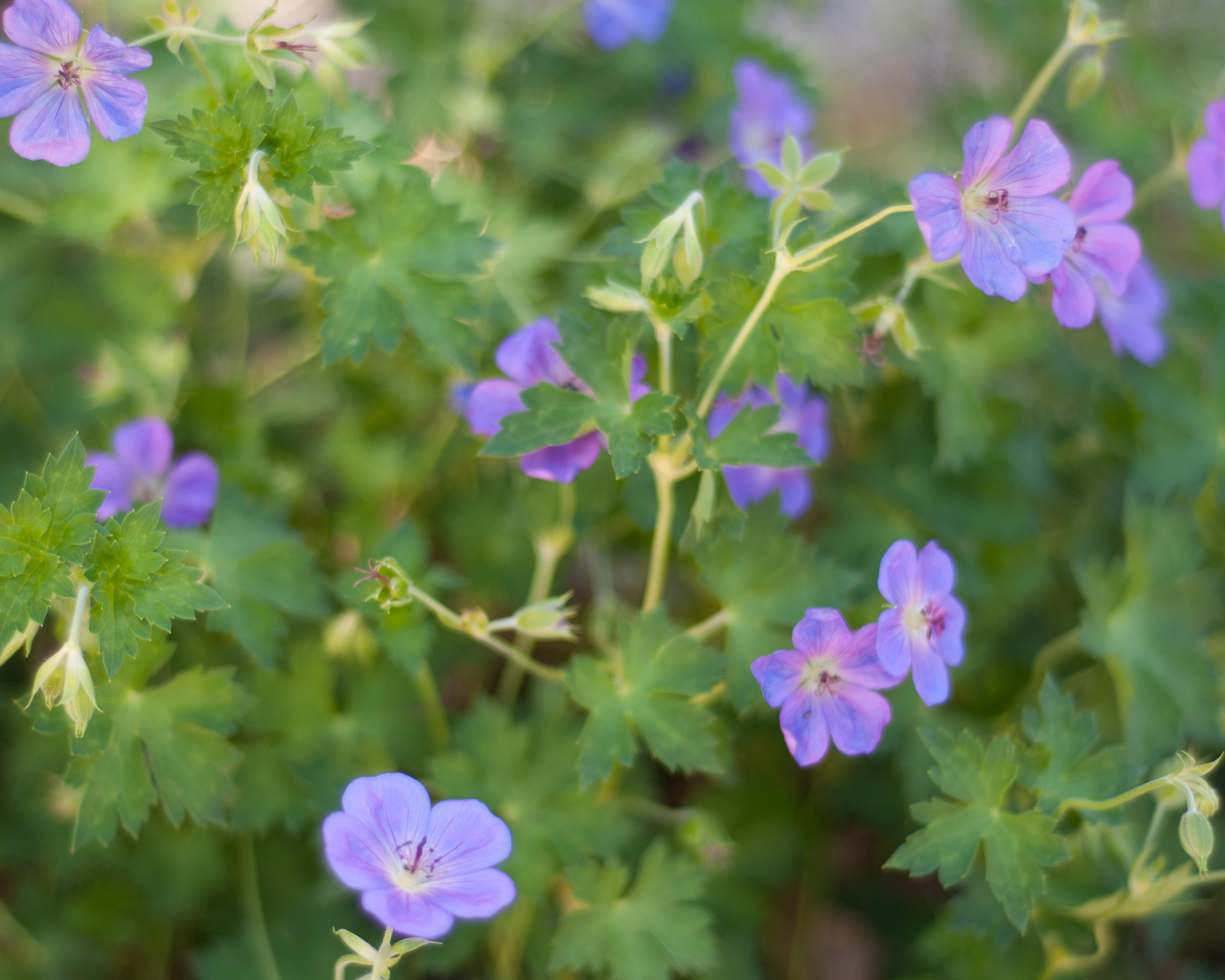
- Hardiness: USDA 5-8 (UK H7)
- Height: 2ft (60cm)
- Spread: 2.5ft (75cm)
- Best for: Long-flowering season
One of the best garden border plants for flower power, this hardy geranium is deservedly popular, producing blue flowers from mid-spring to mid-fall.
‘Rozanne is a favorite resilient, slug-resistant perennial,’ says Oregon-based landscape architect and garden designer Bethany Rydmark. ‘It spills into bright, colorful masses atop walls and along mixed borders. A hardy staple for easy long-lasting color in the garden.’
For best results, grow in semi-shade or sun alongside roses.
4. Rosa Munstead Wood AGM
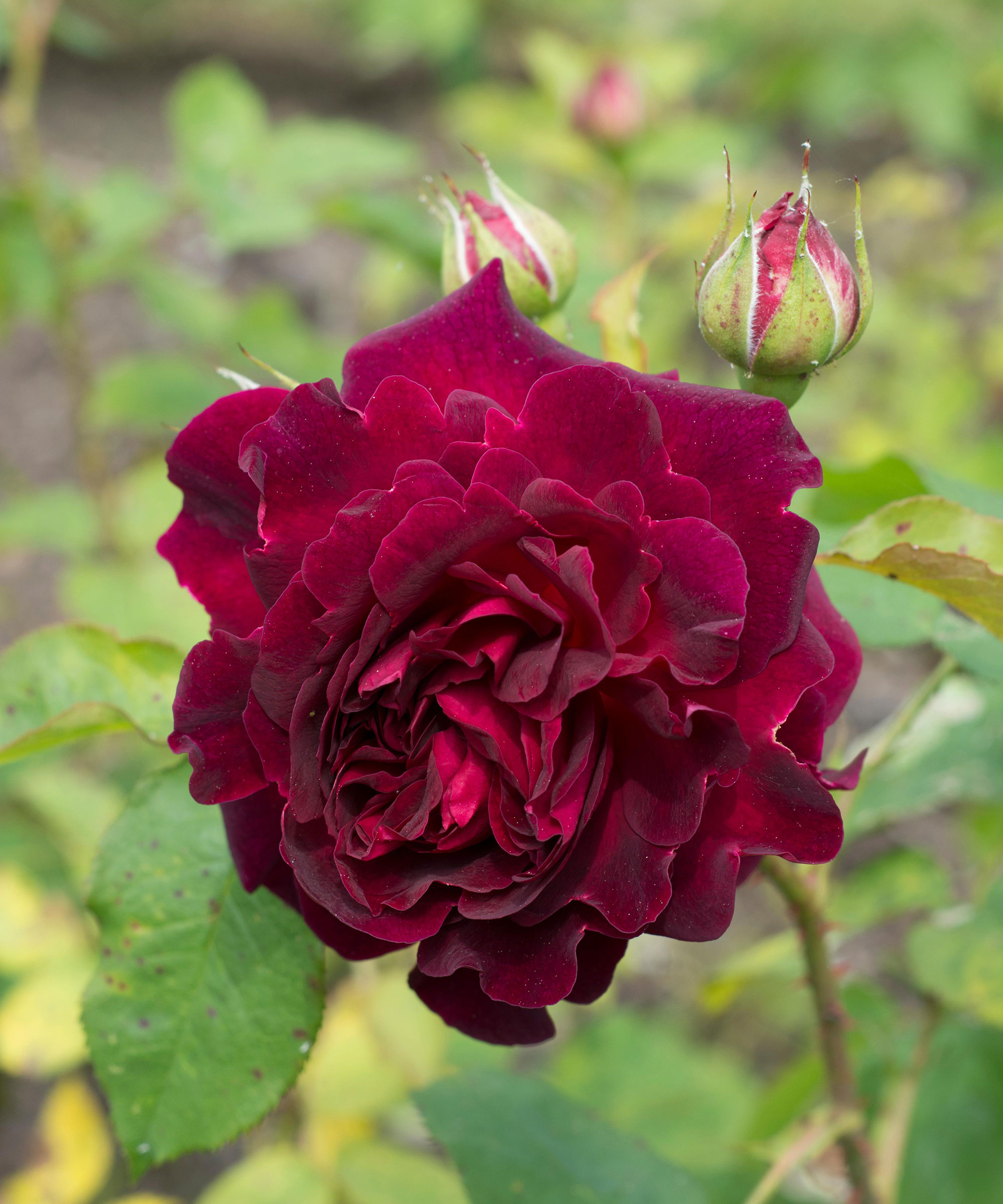
- Hardiness: USDA 5-9 (UK H6)
- Height: 3ft (90cm)
- Spread: 2ft (60cm)
- Best for: Scent
Roses are one of the best slug-repellent plants as slugs loathe the thorny stems and thus leave them untouched. This repeat-flowering David Austin variety is a stunning shrub rose that produces a mass of velvet, crimson-claret blooms throughout summer and into fall. The decadent flowers smell of damsons and the foliage is healthy.
Grow alongside perennials (such as achillea, cranesbill, and campanula) in a sunny border. Alternatively, being compact, it can be grown in a well-drained garden planter.
5. Hydrangea paniculata ‘Jane’ (syn. ‘Little Lime’)
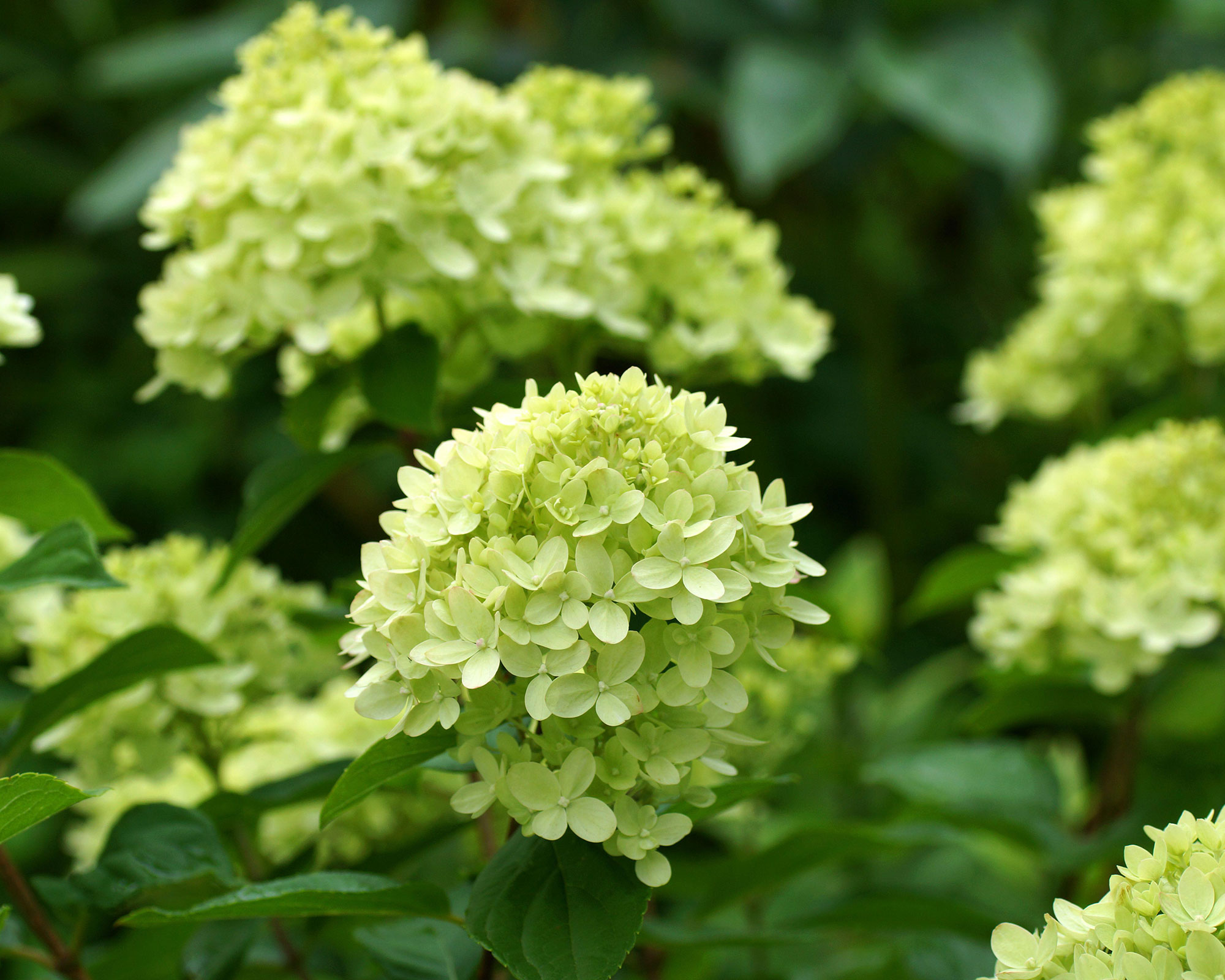
- Hardiness: USDA 3-8 (UK H5)
- Height: 4ft (1.2m)
- Spread: 4ft (1.2m)
- Best for: Cut flowers
A compact version of ‘Limelight’, this deciduous shrub has superb panicles of lime-green flowers that fade to cream and then blush pink.
‘Slugs can do a lot of damage to hostas in shady borders,’ says Ohio-based garden designer Ethan McGory. ‘Hydrangeas can be a nice large-leaved alternative and look great with ferns.’
Grow in well-drained, moist neutral to acid soil or in a well-drained pot of ericaceous compost.
6. Lychnis coronaria AGM
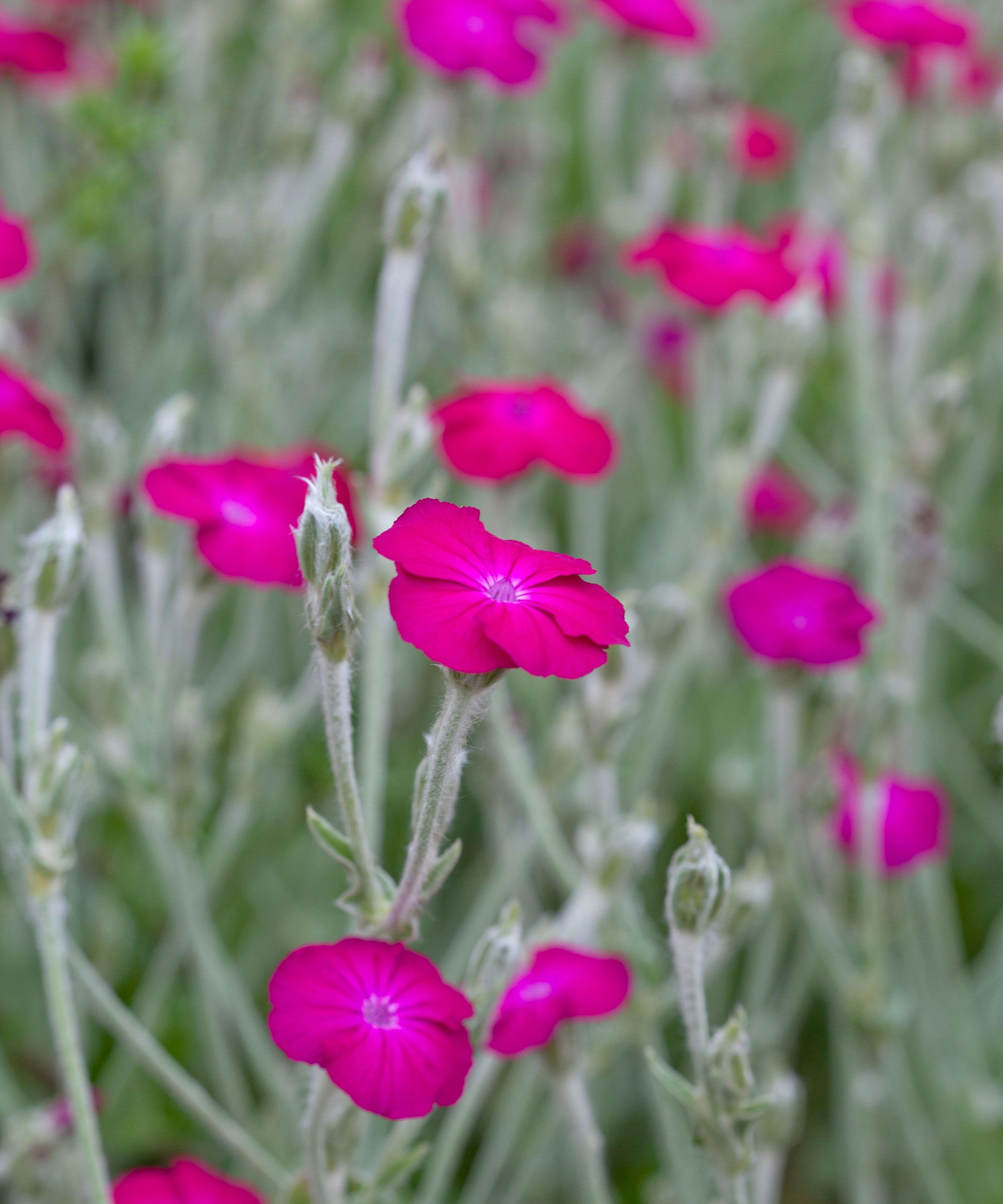
- Hardiness: USDA 4-8 (UK H7)
- Height: 3ft (90cm)
- Spread: 20in (50cm)
- Best for: Foliage
The wonderful rose campion is a cheering riot of single blazing-magenta flowers throughout summer. Slugs dislike the downy texture of the attractive, felty silver-grey leaves and stems and therefore leave them well alone.
The white form is also lovely and equally easy to grow in sunny, well-drained borders or as part of your container gardening ideas. It is a short-lived perennial that will gently self-sow and pairs well with perennials, such as purple salvias and blue nepeta.
7. Sanguisorba ‘Cangshan Cranberry’
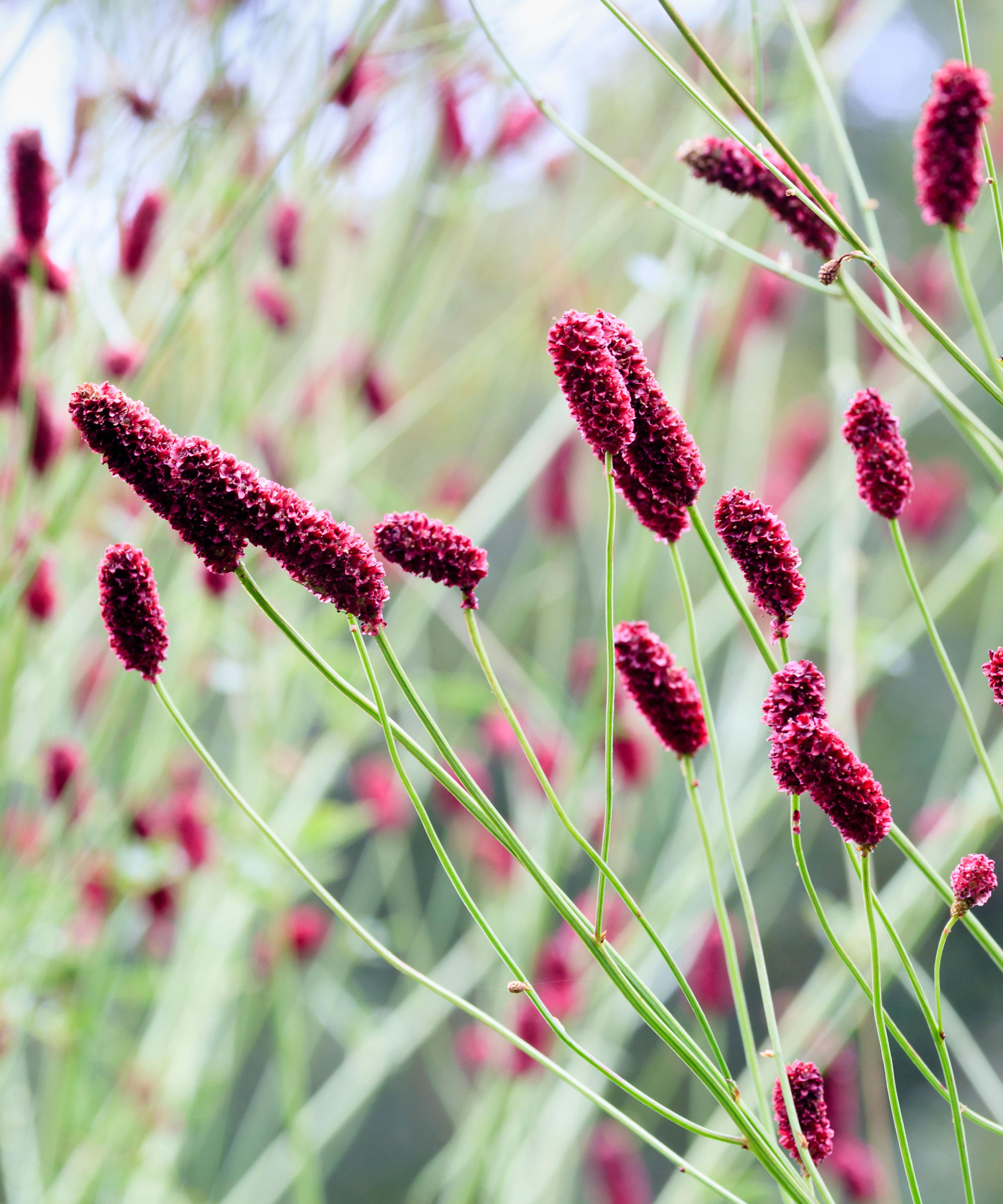
- Hardiness: USDA 4-8 (UK H7)
- Height: 7ft (2.1m)
- Spread: 2ft (60cm)
- Best for: Creating layers
‘Sanguisorbas seem relatively untouched by slugs and are such beautiful plants that go so nicely with many grasses,’ says Neil Lucas. The rich-red flowers of this variety resemble catkins and grow on wiry stems, making them seem to float in the air from late summer to mid fall.
This see-through look is fabulous for creating layers, through which the plants behind can be glimpsed. Best in moisture-retentive, well-drained soil in sun or semi-shade.
8. Anemone x hybrida 'Königin Charlotte' AGM (syn. ‘Queen Charlotte’)
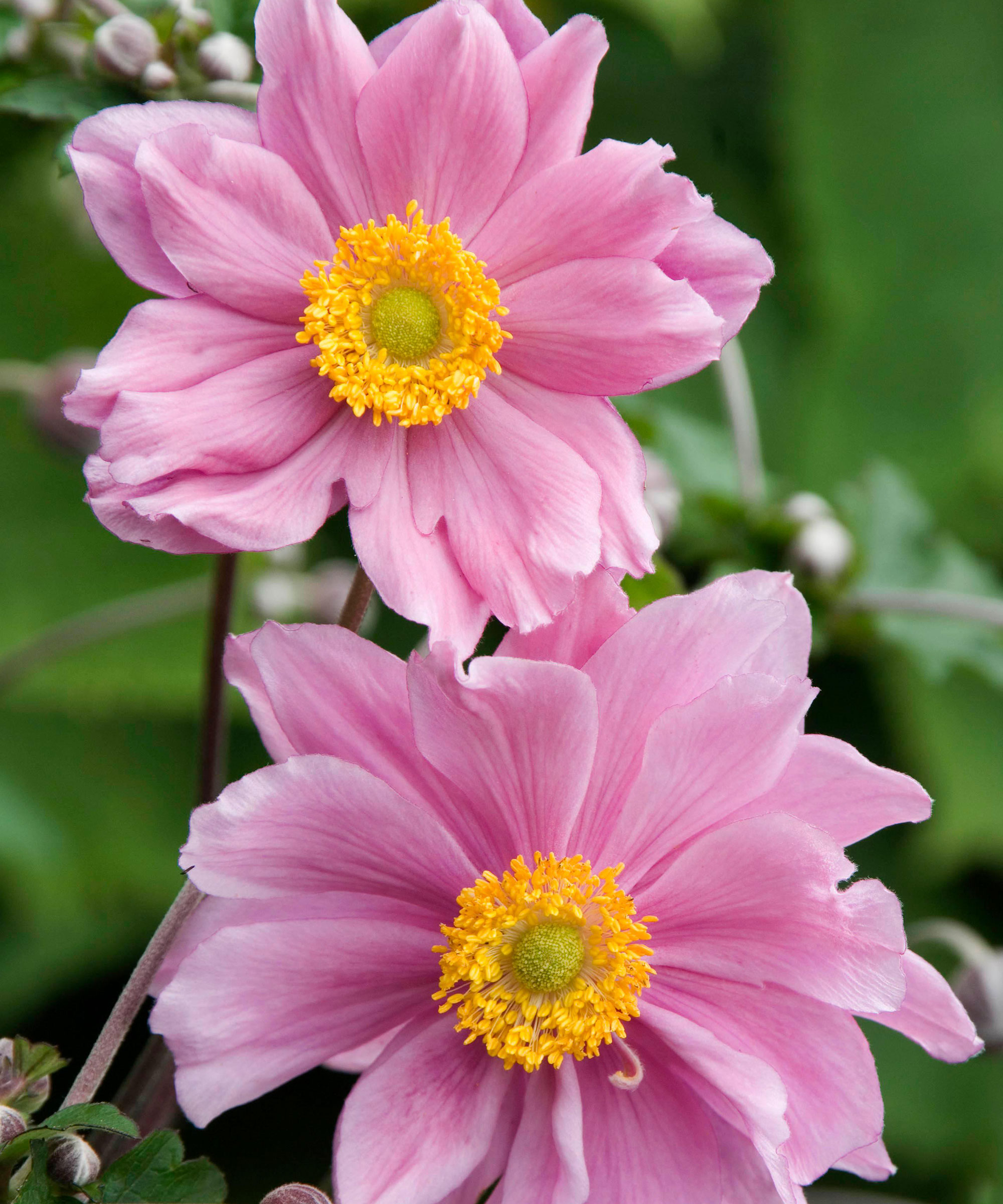
- Hardiness: USDA 4-8 (UK H7)
- Height: 3ft (90cm)
- Spread: 3ft (90cm)
- Best for: Ground cover
This pretty pale-pink Japanese anemone, which blooms in late summer and early fall, is one of the top slug-repellent plants thanks to its coarse toxic leaves.
Grow with sanguisorbas in well-drained, moisture-retentive soil in sun or semi-shade where ground cover is required.
Japanese anemones are not ideal for borders in small gardens, where they can become invasive. Wear gloves to handle it as the leaves can irritate the skin.
9. Digitalis purpurea f. albiflora
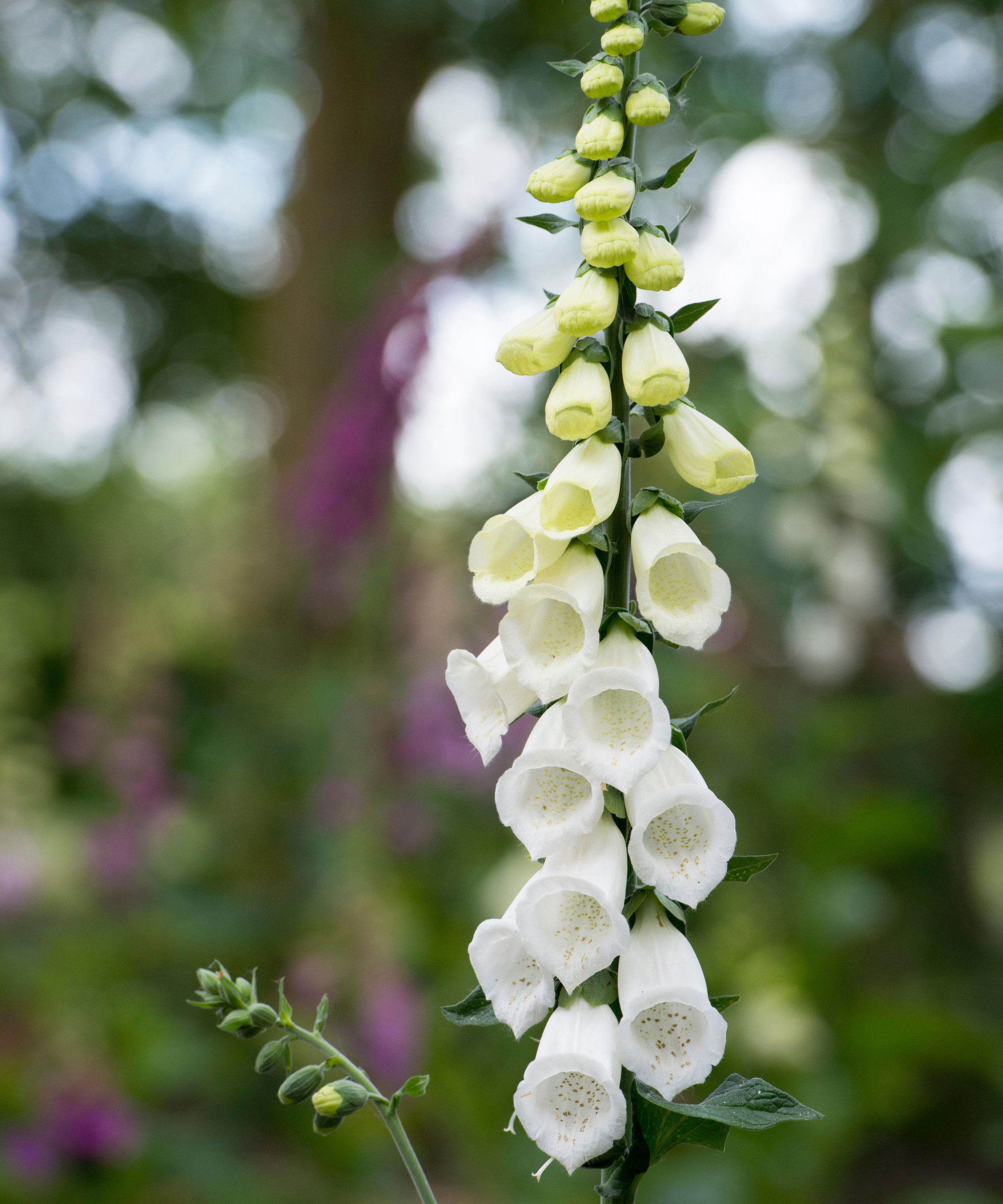
- Hardiness: USDA 4-9 (UK H7)
- Height: 4ft (1.2m)
- Spread: 18in (45cm)
- Best for: Vertical accents
The white-flowered foxglove provides elegant ivory spires that light up borders in dappled shade during late spring and early summer. They're a brilliant plant for pollinators as the hooded flowers are visited by bumblebees, who disappear into them to collect the nectar.
Grow with ferns and Campanula persicifolia in retentive, well-drained soil in sun or semi-shade. It will self-seed around the garden – remove seedlings with purple stalks if you only want the white form.
Foxgloves are also one of the best deer-resistant plants as they are poisonous to deer and therefore very rarely eaten.
10. Euphorbia characias subsp. wulfenii

- Hardiness: USDA 6-8 (UK H4)
- Height: 4ft (1.2m)
- Spread: 4ft (1.2m)
- Best for: Evergreen foliage
This incredible spurge is a Mediterranean sub-shrub that produces enormous clubheads of golden-lime flower bracts from mid spring.
Once they are spent in midsummer, they are cut back to reveal an attractive mound of fleshy blue-grey leaves that look good all year.
Slugs dislike the leathery foliage, which contains an irritating sap – for this reason, always wear gardening gloves to prune. Grow with alliums and tulips in well-drained soil in full sun.
11. Nepeta ‘Six Hills Giant’

- Hardiness: USDA 4-7 (UK H7)
- Height: 3ft (90cm)
- Spread: 2ft (60cm)
- Best for: Low maintenance
This caramel-scented catmint is an essential border perennial, producing an airy cloud of grey-green foliage and purple flowers in summer that bees find irresistible.
Slugs are put off by the strongly aromatic leaves, but our feline friends love it. To prevent cats and the wind flattening it, provide staking in late spring. Then trim after flowering to encourage a second flush of flowers in early fall. Combine with roses in well-drained soil in sun.
12. Potentilla ‘Gibson’s Scarlet’ AGM
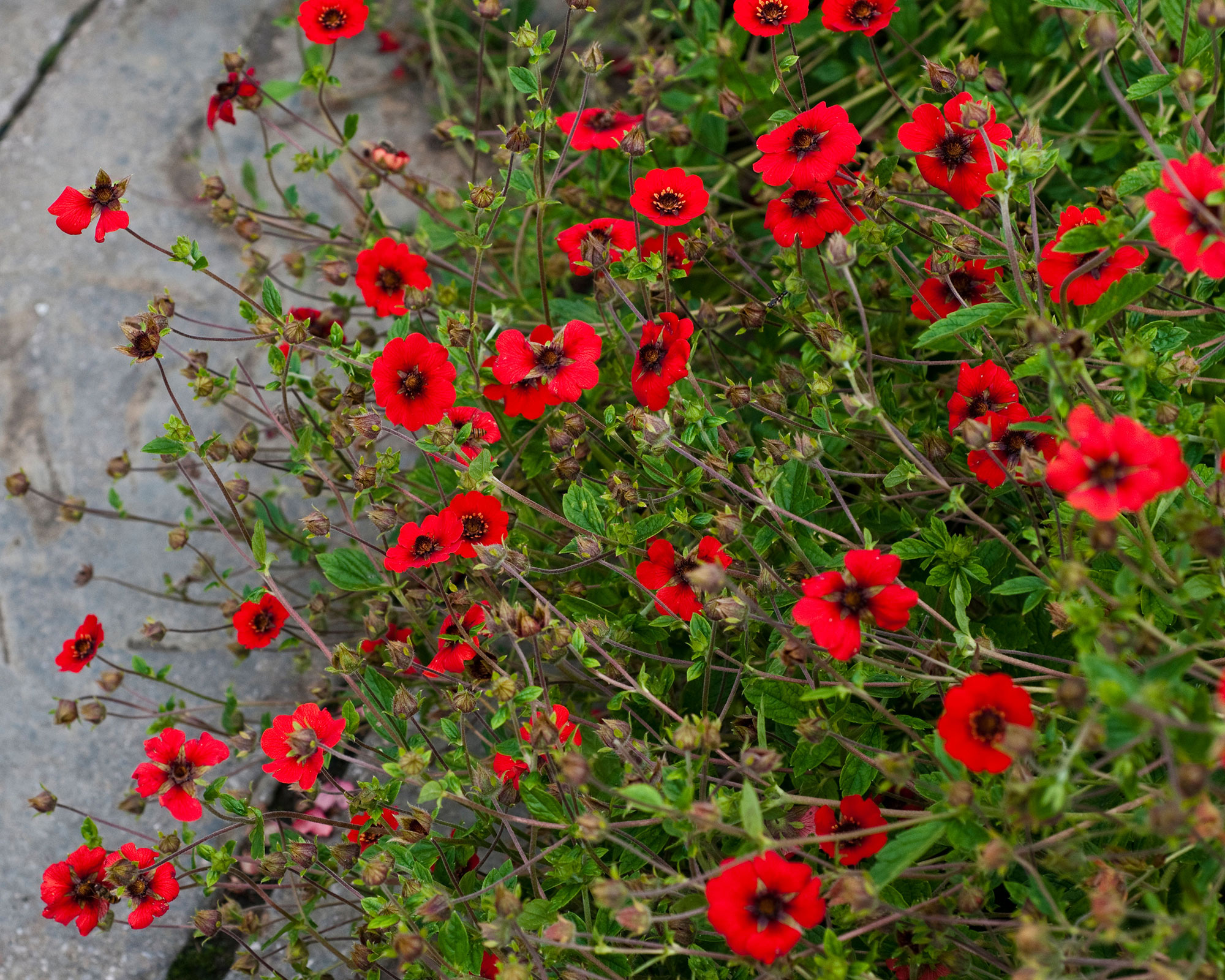
- Hardiness: USDA 5-7 (UK H7)
- Height: 18in (45cm)
- Spread: 2ft (60cm)
- Best for: Color
Vivid-red single flowers atop long stems are produced by this cinquefoil throughout summer, providing a blast of color at the front of the border, as well as nectar for bees.
Slugs are uninterested in the bright-green strawberry-like leaves. When grown amongst other plants (such as Mexican feather grass and origanum), it is upright, or let it flop over a path, alongside lady’s mantle, in well-drained soil in full sun. Deadhead flowers regularly to prolong flowering.
13. Crocosmia ‘Limpopo' AGM

- Hardiness: USDA 5-9 (UK H5)
- Height: 2.5ft (75cm)
- Spread: 18in (45cm)
- Best for: Architectural leaves
Gorgeous arching sprays of outward-facing pink-orange flowers are produced by this modern montbretia from mid summer to early fall.
The upright sword-like foliage adds architectural structure to the middle of the border and glows green in the sun.
Grow this easy cormous perennial with achillea and helenium in sun or semi-shade in well-drained retentive soil. Divide every few years to maintain flower power. Mulching each fall in cold regions will protect it from the worst of the weather.
14. Lavandula angustifolia ‘Folgate' AGM
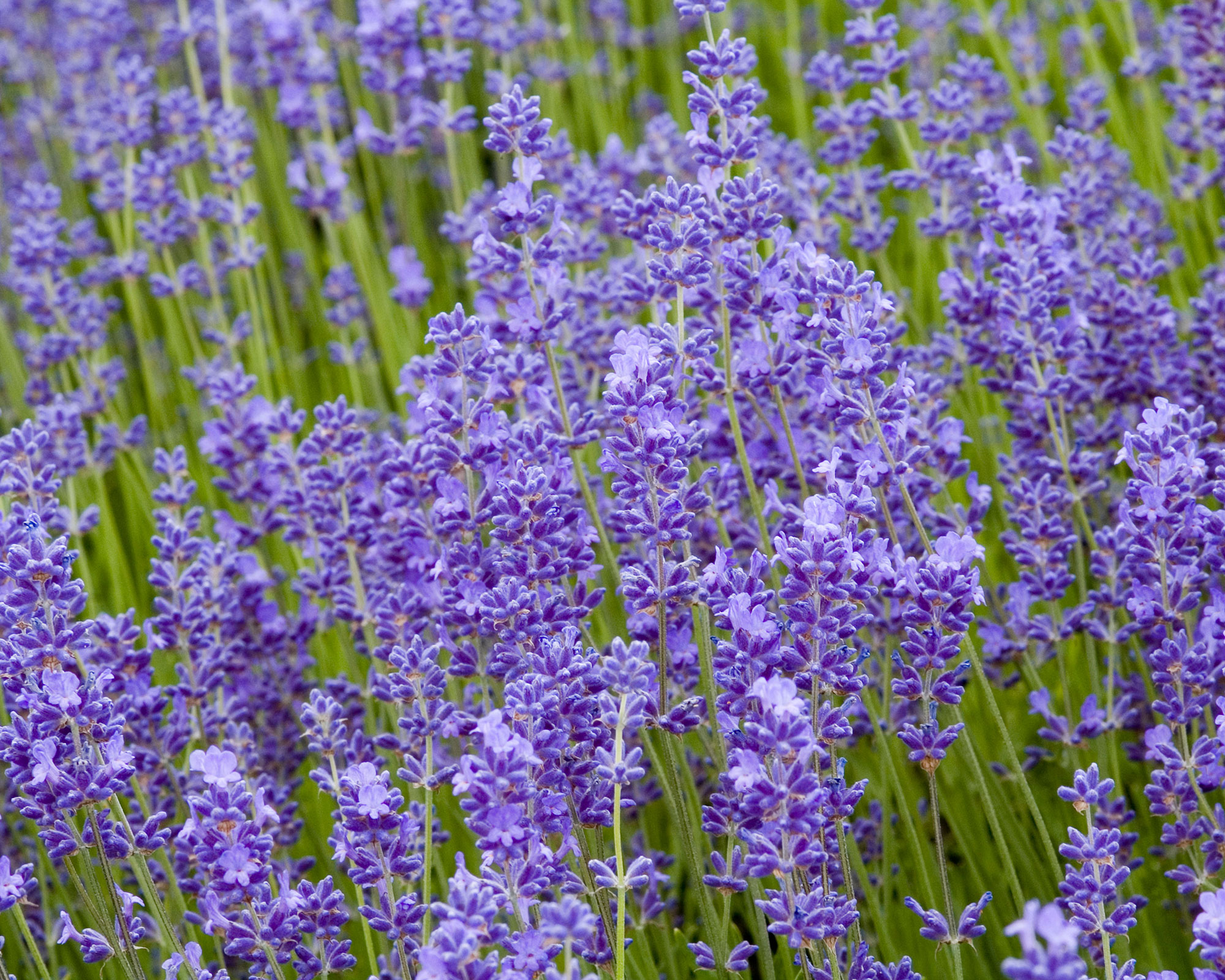
- Hardiness: USDA 5-8 (UK H5)
- Height: 2ft (60cm)
- Spread: 3ft (90cm)
- Best for: Bees
When the fragrant purple flowers of this fantastic English lavender bloom in summer, the air hums with the sound of foraging bees, but slugs are deterred by the strong scent of the blooms.
The aromatic grey leaves of this bee-friendly plant are evergreen, providing structure and color all year. Grow with santolina, cistus, and rosemary or use it to create a low hedge in very well-drained, poor neutral to alkaline soil in sun.
Lightly trim in mid spring and then clip harder (but never into the woody stems) after flowering.
What plants do slugs hate most?
- Aromatic foliage: Slugs slide past plants that have intensely fragrant leaves, such as lavender, rosemary, and fennel.
- Hairy leaves: Woolly, furry, and downy foliage (such as lamb’s ear, lychnis, and pulmonaria) is a no-go for these slimy fiends.
- Poisonous plants: Slugs don’t go anywhere near garden plants that harbor toxins, such as monkshood, foxgloves, and spurge.
- Tough plants: Leaves that are too tough or leathery – including montbretia, eryngium, and houseleeks – are too chewy for slugs.
- Ferns and grasses: Slugs are not tempted by these wonderful foliage plants, which are too coarse (and, in some cases, aromatic).
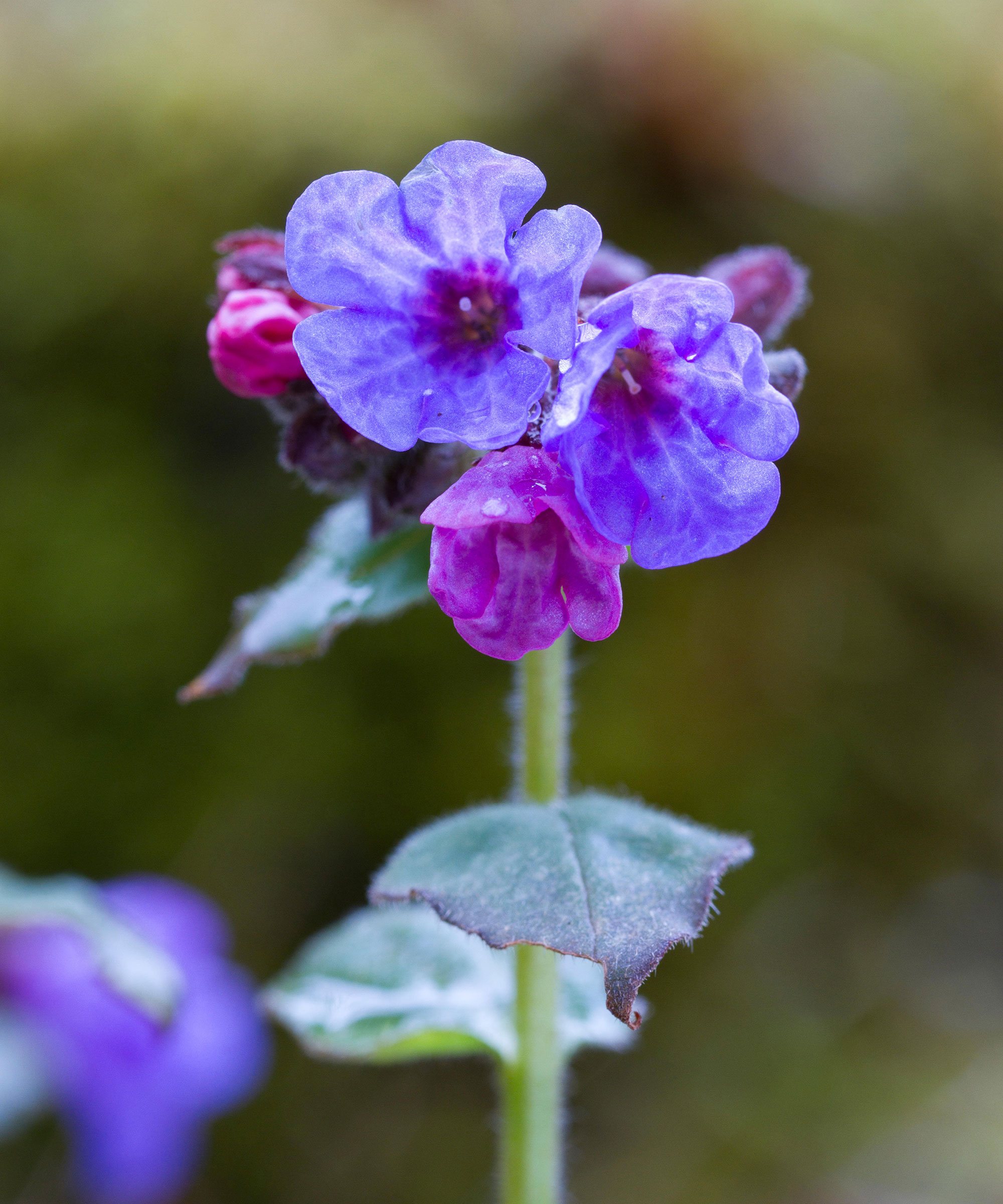
Are slugs bad for plants?
In a rainy year, when slugs can multiply, they can defoliate the plants that they love to eat, such as delphiniums and hostas, in turn preventing flowering.
They especially love the young leaves of new perennial growth in spring or seedlings – even plants they largely avoid (such as aromatic nasturtiums and salvias) are tasty to them at that stage of new growth. Therefore, spring is the time to head out at dusk (or after dark with a head torch) and remove slugs and snails by hand.
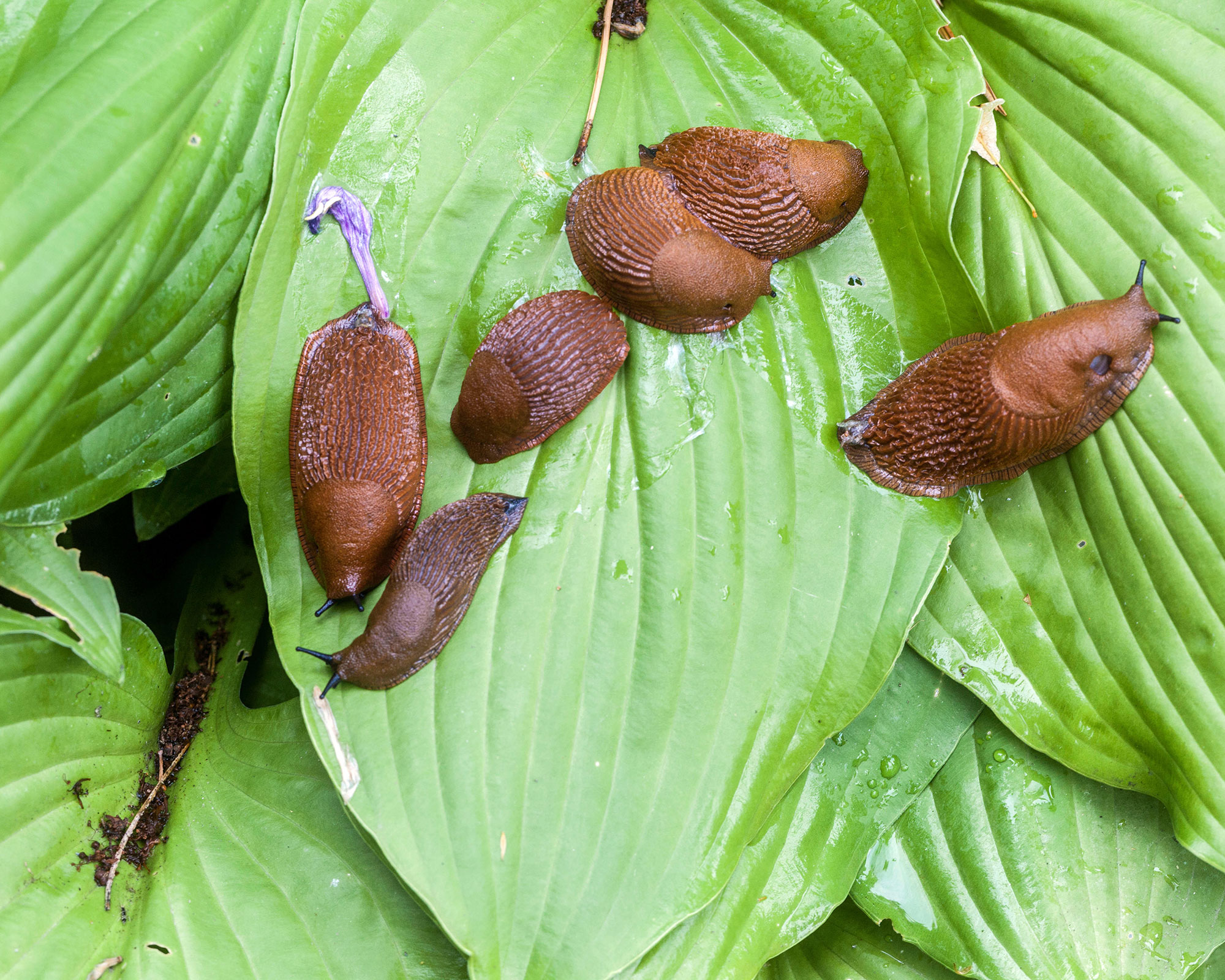
What are the best slug-resistant vegetables?
Slugs are not keen on beetroot, artichoke, garlic, onion, chard, tomatoes, leeks, and celery. It’s also a great idea to create a barrier of herbs that they find repellent (such as lemon balm, chives, fennel, and mint) around the edge of the your kitchen garden, or between rows of veg that they eat.

The garden was always a big part of Holly's life growing up, as was the surrounding New Forest where she lived. Her appreciation for the great outdoors has only grown since then. She's been an allotment keeper, a professional gardener, and a botanical illustrator – plants are her passion.
